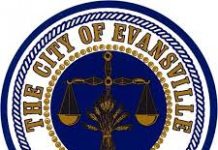UE Faculty Supports Senate Bid to Create Faculty Plan; UE Board of Trustees Rejects Senate Bid to Create Faculty Plan
Evansville— 1/7/20 — The faculty of the University of Evansville has supported a Senate resolution calling for the creation of a committee that would allow the faculty to construct its own institutional alignment plan. The proposed Faculty Institutional Alignment Plan Ad Hoc Committee would offer its plan to the President as an alternative to that which he is presently constructing alongside his senior administrative team. The faculty supported the Senate’s resolution by 85 votes to 21 with 1 abstention.
The resolution endorsed by the Senate and the faculty was drafted in response to the President’s persistent calls for faculty proposals that respond to this draft academic alignment plan. The Senate’s resolution replies fully and positively to this request by seeking to offer not merely an academic alignment plan but rather a complete institutional alignment plan. It does so because, as the resolution observes, the Senate recognizes that “the academic component of the university is necessarily fundamentally intertwined with all its other components.†The resolution also responds to the President’s calls for urgent action by setting the proposed committee the tight deadline of the last day of the Spring 2021 semester, May 7th, to complete its monumental task.
Yet, despite the faculty’s support for the Senate resolution, there will be no Faculty Institutional Alignment Plan Ad Hoc Committee. The Board of Trustees yesterday sent an e-mail to the faculty inwhich it wrote:
We understand that the faculty is considering a resolution to create a “Faculty Institutional Alignment Plan Ad Hoc Committee.’’ The timeline proposed in the resolution is concerning as it appears designed to create unnecessary delay. More troubling, the resolution resembles the process undertaken several years ago known as prioritization. The prioritization process was a painful and unproductive process that pitted faculty members and academic departments against each other. The recommendations from that process resulted in no significant reforms and failed to address UE’s operating deficit. We do not intend to return to such a divisive and failed process.
The prioritization process was certainly “painful,†but the reason it resulted in “no significant reforms and failed to address UE’s operating deficit†is that the faculty’s numerous thoroughly researched recommendations were neither followed by the senior administration nor the Board of Trustees. Also, even were the Board’s characterization of the Prioritization process accurate, it would not justify denying the current faculty its mandated determining role in decisions on educational policy. Lastly, it is difficult to grasp how the Board can view the timeline of the faculty’s proposal as appearing to be “designed to create unnecessary delay†when the proposed faculty committee would have the same amount of time to produce an alignment plan for the whole institution as it took the President and his team to produce their plan for the university’s academics.
The Board also wrote:
The Board also is committed to ensuring the continuation of the liberal arts foundation upon which UE was built. We urge all faculty – as individuals, departments, and schools – to identify, discuss, and recommend changes to the proposed plan. UE’s liberal arts foundation will be stronger with the constructive sharing of faculty ideas designed to improve the proposed academic alignment plan and bring about meaningful, achievable, and sustained positive change.
UE’s liberal arts foundation will be irreparably damaged by the proposed plan which cuts programs and faculty in core liberal arts disciplines such as History, Philosophy, Religion, and Political Science. It is difficult to see how the Board’s statement comports with their support of the current administration.
In related news, the Board’s message to the faculty also echoed the President’s recent e-mail to the Chair of the Faculty Senate regarding the Senate’s December 17th resolution. In that e-mail, the President wrote:
The Faculty Handbook provides that “[t]he responsibility of the faculty is in educational policy rather than administrative decisions.†The proposed academic alignment plan is not an educational policy decision, but an administrative decision motivated by financial considerations of the University and based on the program evaluation criteria. The process described in the Faculty Resolution was designed for ordinary operations and provides for the CurriculumCommittee’s (and Faculty Senate’s) review of routine proposals for changes. It does not apply to the current proposed academic alignment plan. Nevertheless, Dr. Austin and I sought and continue to seek input, comments, recommendations, and proposals regarding the draft academic alignment plan from all faculty members that includes but is not limited to the Faculty Senate and/or the Curriculum Committee.
The Board’s e-mail to the faculty supported this position The Board of Trustees supports President Pietruszkiewicz and his administration in the daily oversight of the University, including the development of proposals for the reallocation of resources among academics, administration, staff, athletics, and capital projects. That is the job of the administration, with the Board of Trustees exercising its fiduciary oversight and responsibility. We thoroughly support the administration as it works through the difficult options related to resource allocation and the sustained future of UE. The Board of Trustees also thoroughly supports the role of the faculty to provide input on the proposed academic alignment plan. Faculty recommendations for constructive and financially viable modifications to the proposed plan are valued as we restructure our academic areas as one component to meet our financial goals.
The position occupied by the President and the Board was addressed by the Chair of the Faculty Senate in a response to the President’s original message that was supported by 15 of the 17 Senators:
In your response to the Senate’s resolution, you argued that the proposed academic alignment
plan does not fall within the responsibilities of the faculty because it is an “administrative decision†rather than an “educational policy decisionâ€. In offering this argument, you quoted a sentence from the Faculty Manual which says that the “responsibility of the faculty is in educational policy rather than administrative decisions.†However, when one looks at that sentence together with the one which follows it, one can see that your proposed academic alignment plan is as much an educational as an administrative matter:
The responsibility of the faculty is in educational policy rather than administrative decisions. Faculty, acting with the President, determine all matters of educational policy with respect to academic programs including degree requirements, honorary degrees,curriculum changes, [and] academic standards.
The implementation of your proposed academic alignment plan would eliminate three entire departments and eighteen majors and so enact massive “curriculum changes†that would
fundamentally alter the makeup of the university’s “academic programs.†Given the seismic impact of the implementation of your proposed plan on the university’s educational policy, it is entirely appropriate for the faculty to play a determining role in the construction of any final academic alignment plan. This notion accords not only with the university’s shared governance structure, but also with its polices on curricular change. Your call for “input, comments, recommendations, and proposals†from faculty members regarding your proposed academic alignment plan in no way reflects the faculty’s designated relationship to educational policy.
Rather than being given any opportunity for determination, the faculty is simply being asked to offer ideas to those who are truly making the decisions.
I would also like to discuss the section of your response in which you argued that the “process described in the Faculty Resolution†does not “apply to the current proposed academic alignment plan†because that process was “designed for ordinary operations and provides for the Curriculum Committee’s (and Faculty Senate’s) review of routine proposals for changes.â€
Since the process described in the Senate’s resolution appears repeatedly and consistently within the Faculty Manual, the question your argument begs is this: In which section of which university document do you consider the process for plans such as yours to be outlined? In your message, you described your proposed plan as “an administrative decision motivated by financial considerations of the University.†A declaration of financial exigency would enable special processes for curricular change, but you have already told us that you do not intend to declare financial exigency. Has this now changed?
The Faculty Senate Chair has not received a response from the president.
According to the American Association of University Professors’ publication: “The Role of the Faculty in Conditions of Financial Exigency:
Financial exigency entails a severe financial crisis that fundamentally compromises the academic integrity of the institution as a whole and that cannot be alleviated by less drastic means.
Even if the president changes course and declares that UE is in a state of financial exigency, it would be difficult to justify this declaration in light of the fact that his plan begins with academic cuts and that “less drastic†measures have neither been attempted or announced.
In light of all this, we, the faculty of the University of Evansville, find ourselves in a difficult position. We asked the President to follow the university’s defined processes for curricular change and he responded that they don’t apply to him. We asked to participate in the President’s offered process for curricular change and the Board of Trustees refused us the opportunity to do so. At this time, it is quite clear that, for the President and the Board, shared governance means the sharing of governance between the President and the Board. But this does not mean that we stand alone. Innumerable students, alumni, staff members, administrators, and community members are working tirelessly to support our campaign. We thank them for their inspiration and we shall honor them by continuing to fight to SaveUE.
To learn more:
• Visit our website at saveue.com • Follow us on Facebook at Save UE
• Follow us on Twitter at @Save_UE • Follow us on Instagram at save.ue
• E-mail us at ueaaup@gmail.com




